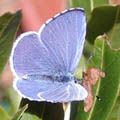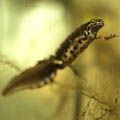 |
|
||||||||
Stoke Newington, Hackney, London Wildlife & Nature. Birds, Butterfly, Dragonfly, Trees, Flora (Flowers), Fungi.
|
Window boxes provide nectar for the insects birds feed on. Garden organically to avoid harming wildlife with sprays, fertilisers and insecticides. These poisons can travel up the food chain or enter water sources. Make your own, or buy peat-free, compost to help prevent the destruction of peat bogs that have taken thousands of years to form. Supply water. Garden ponds and birdbaths are vital when natural water supplies are hard to find. Use water carefully in the garden. Don’t use sprinklers as they are wasteful and inefficient. About 100,000 litres of water fall on the average rooftop annually - collect this for your garden and avoid using tap water. Avoid using gravel, concrete or decking. Much more wildlife friendly are lawns (or even better a meadow), shrubs, borders and trees. If you have a lawn, mow it less often and tolerate a few daisies rather than treating it with harmful chemicals. A corner can be left unmown to give insects and other animals somewhere to hide. Water less often in the summer to save resources – a lawn will survive. Create different microhabitats around your garden to attract a good range of wildlife: Plant spring and summer wildflower meadow areas, where you have space, to attract insects that support the food chain. Ideal plants include: Bellflower, Common Fumitory, Common Pink, Cranesbill, Gypsophila, Herb Robert, Purple Saxifrage, Rock Rose, and Thrift. If you have a pond, make sure that it has a sloping edge so that animals can crawl in and out easily. Alternatively, put out a shallow container of water with sloping sides for a bird bath. Try to place it away from anywhere cats might hide. Make a wildlife rockery for slugs and snails, and help the thrushes that feed on them. Leave the rocks a little looser than usual so small creatures, newts and toads, can hide in autumn and winter. Don’t use slug pellets. They harm frogs, toads and hedgehogs which eat slugs. An overgrown area with brambles, stinging nettles and dead wood is a great help to larger mammals such as foxes and hedgehogs which can rest undercover. Leave room for decay. Pile up old logs and autumn leaves in a shady corner to create homes for insects as well as hibernating amphibians and hedgehogs. A woodpile attracts all sorts of creatures, from moths and beetles to voles and wood mice. Plant native trees and shrubs, from oak, beech, ash and hornbeam at the larger end of the scale, to holly, blackthorn, (wild) cherry, hazel and yew at the smaller. Ash and Oak trees both support an enormous diversity of species. Tree Care - Protect woodland and its wildlife - | ||||||||
|
|||||||||
|
Website by www.johnprecious.co.uk © TeRNS |





